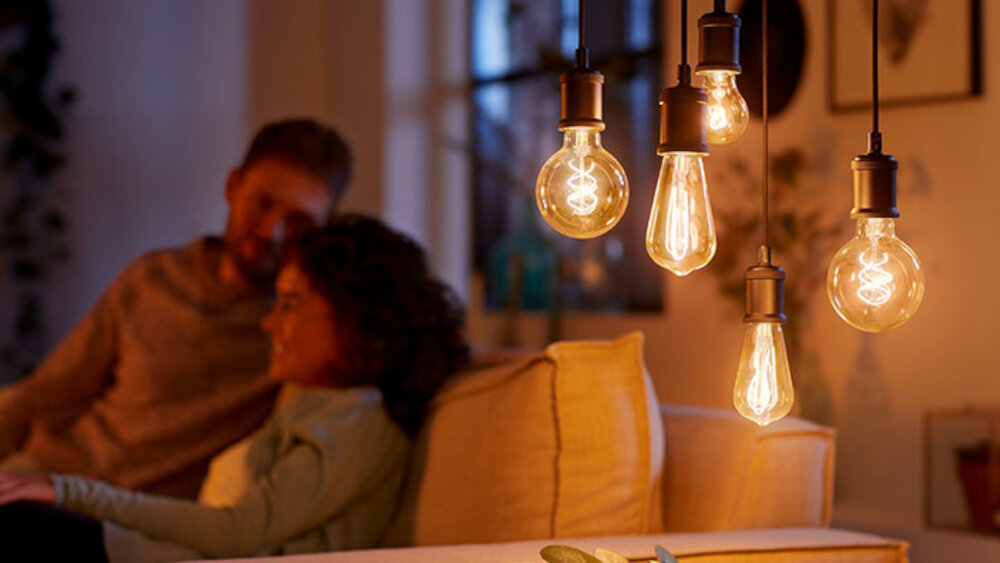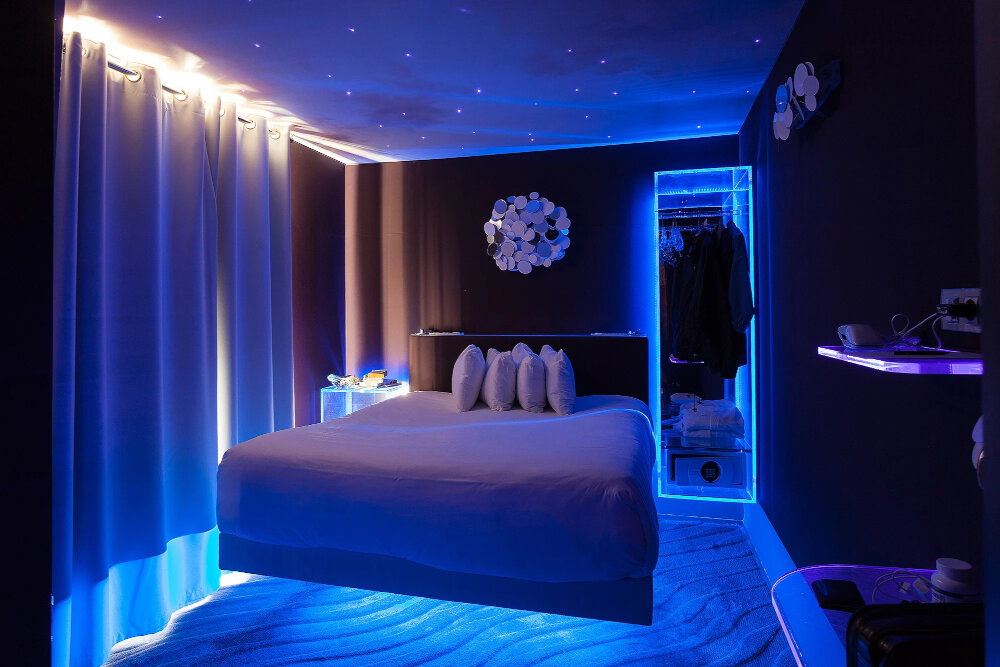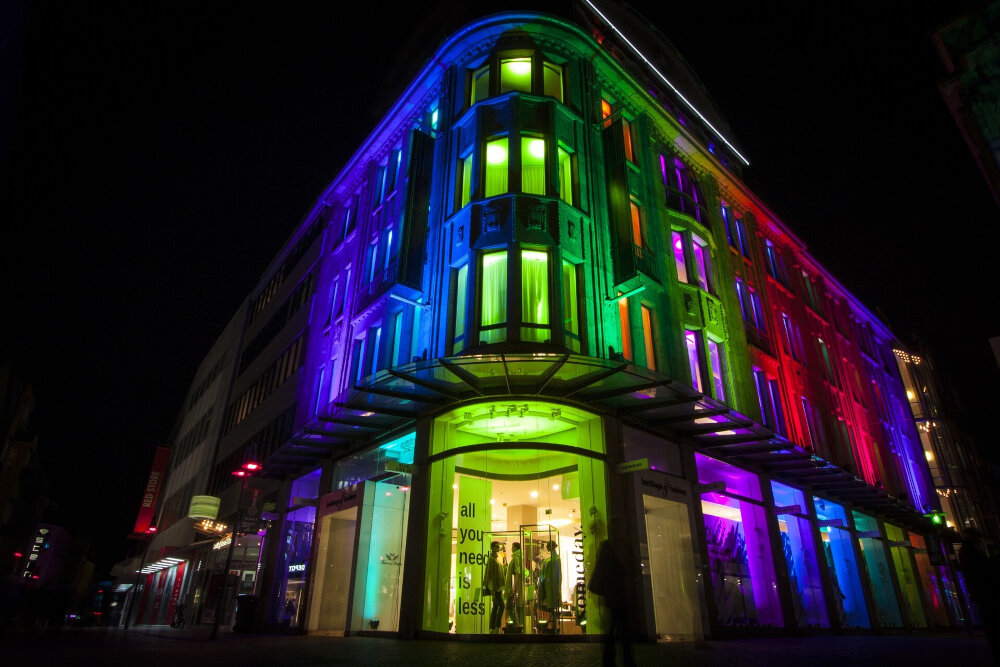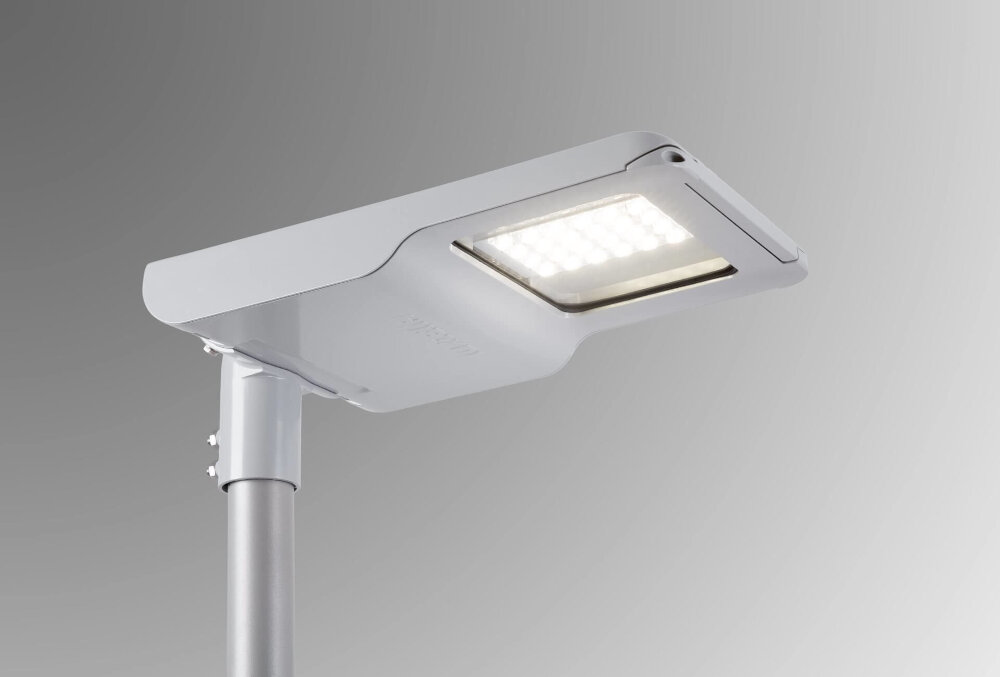LED Light Flickering: Top Reasons and Solutions to Address the Issue

LED lights have become the preferred lighting option for homes, offices, and public spaces due to their energy efficiency, long lifespan, and eco-friendliness. However, despite the many advantages of LED lights, they are not immune to issues, and one of the most common problems experienced by users is flickering. LED light flickering can be a frustrating issue that not only affects the quality of lighting but can also lead to eye strain, headaches, and other health problems. There are various reasons why LED lights flicker, and identifying the root cause is essential to finding a solution. Some of the top reasons for LED light flickering include voltage fluctuations, incompatible dimmer switches, poor wiring, and faulty LED drivers. Fortunately, there are several solutions available to address the issue, ranging from simple fixes such as tightening loose connections to more complex solutions such as replacing the LED driver or upgrading the electrical system. In this article, we will explore the top reasons for LED light flickering and provide actionable solutions to help you address the issue and enjoy the benefits of LED lighting without any disruptions.
LED light flickering occurs when the light output fluctuates at a rapid pace, which is often caused by several reasons such as voltage fluctuation, damaged wiring, or incompatible dimmer switches. This issue can have a significant impact on consumers as it can cause discomfort, headaches, and eye strain. Moreover, flickering can also cause distractions when working or studying, making it difficult to concentrate. In addition, it can also affect the overall appearance of a room, making it less aesthetically pleasing. Therefore, it is essential to address this issue to ensure a comfortable and safe environment for consumers.
Electrical Issues

Electrical issues are a common problem that homeowners face, especially when it comes to the flickering of LED lights. There are several reasons for this flickering, including voltage fluctuations, loose connections, and incompatible dimmer switches. Voltage fluctuations can be caused by a variety of factors, such as power surges, faulty wiring, or overloading of the circuit. Loose connections can also lead to flickering, as they can cause a disruption in the flow of electricity. Incompatible dimmer switches can also be a culprit, as not all LED lights are compatible with all types of dimmer switches. It is important to address these issues promptly, as flickering lights can not only be annoying but can also be a sign of a more serious problem. To address these electrical issues, it is important to hire a licensed electrician who can identify and fix the root cause of the flickering. This may involve replacing faulty wiring, upgrading the circuit, or installing a compatible dimmer switch. Additionally, homeowners can take steps to prevent voltage fluctuations by unplugging unnecessary devices and appliances, using surge protectors, and ensuring that their home’s electrical system is up to code. By addressing these issues proactively, homeowners can enjoy the benefits of LED lighting without having to deal with the frustration of flickering lights.
Overloading circuits is one of the primary reasons for LED light flickering. This occurs when too many electrical devices are connected to a single circuit, exceeding its capacity. The circuit breaker trips, causing the power to shut off, and the LED lights flicker. It is essential to calculate the total wattage of household electrical devices and compare it to the circuit’s maximum capacity before connecting new devices to avoid overloading. Additionally, it is important to distribute electrical devices across multiple circuits to avoid overloading one circuit. By preventing circuit overloads, LED light flickering can be minimized, and the longevity of the electrical system can be prolonged.
Poor wiring connections are a common cause of LED light flickering. This issue can occur when the connection between the LED driver and the LED light fixture is unstable or loose. As a result, the current flow to the LEDs becomes intermittent, causing the light to flicker or even turn off completely. Poor wiring connections can also cause overheating, which can lead to long-term damage to the LED light fixture. To address this issue, it is important to ensure that all wiring connections are properly secured and tightened. Regular maintenance checks can help detect and address any loose connections before they cause LED light flickering or other issues.
Voltage fluctuations are one of the most common reasons behind the flickering of LED lights. These fluctuations occur when the voltage supplied to the LED light fluctuates above or below its rated voltage. This can happen due to various reasons, including electrical storms, power grid issues, or even the use of other high-powered electrical devices in the same circuit. When the voltage fluctuates, the LED light may flicker, dim, or even turn off completely. To address this issue, it is recommended to install a voltage stabilizer or surge protector to regulate the voltage and prevent fluctuations from affecting the LED light’s performance.
Environmental Factors

Environmental factors play a significant role in LED light flickering. One of the most common environmental factors that cause flickering is voltage fluctuations. When the voltage supplied to an LED light is not stable, it can cause the light to flicker. This is because LED lights require a constant voltage to operate smoothly. Voltage fluctuations can occur due to a variety of reasons, such as power grid issues, faulty wiring, and unstable power sources. To prevent voltage fluctuations, it is essential to ensure that the wiring and power source are stable and that the LED light is compatible with the voltage supplied. Another environmental factor that can cause LED light flickering is temperature changes. LED lights are sensitive to temperature changes, and extreme temperature fluctuations can cause the light to flicker. For instance, if an LED light is exposed to high temperatures for an extended period, it can cause the components to overheat and lead to flickering. On the other hand, if the LED light is exposed to low temperatures, it can cause the components to freeze and lead to flickering. To prevent temperature fluctuations, it is recommended to install LED lights in areas with stable temperatures and good ventilation. Additionally, LED lights with built-in thermal management systems can help regulate temperature and prevent flickering.
Temperature changes are one of the most common reasons for LED light flickering. LEDs are sensitive to temperature changes, and they can flicker or dim if the temperature changes too quickly or too dramatically. This is because the heat generated by the LED can affect its performance, causing the current to fluctuate and the light to flicker. In addition, temperature changes can also affect the components of the LED driver, which can result in flickering or dimming. To address this issue, it is important to ensure that the LED is installed in an area with a consistent temperature and proper ventilation. Additionally, choosing an LED with a high-quality driver can help to minimize the impact of temperature changes on its performance.
Humidity levels can play a significant role in the performance of LED lights. High levels of humidity can cause condensation to form inside the fixture, potentially leading to corrosion and electrical issues. On the other hand, low humidity levels can cause static electricity buildup, which can result in flickering or even complete failure of the LED lights. It is important to maintain a proper balance of humidity levels to ensure the longevity and proper functioning of LED lights. This can be achieved through the use of dehumidifiers or humidifiers, depending on the specific needs of the environment.
Sunlight exposure is a crucial aspect of human health and well-being. It provides the body with essential vitamin D, which is necessary for strong bones and a healthy immune system. However, overexposure to sunlight can also lead to sunburn, premature aging, and an increased risk of skin cancer. Therefore, it is important to strike a balance between getting enough sunlight to maintain optimal health and protecting oneself from its harmful effects. This is particularly relevant when considering the use of LED lights, which can emit flickering light that mimics sunlight and may exacerbate the risks associated with overexposure. By understanding the potential risks and taking appropriate measures to mitigate them, individuals can enjoy the benefits of sunlight exposure while minimizing its negative impact on their health.
LED Light Components

LED light components are essential elements that enable LED lights to function efficiently. Some of the basic components that make up an LED light include the LED chips, driver, and heat sink. The LED chips are responsible for producing light while the driver regulates the voltage and current to ensure that the LED chips operate within the required parameters. The heat sink, on the other hand, dissipates excess heat generated by the LED chips to prevent overheating, which can cause the LED light to flicker. Other components that may affect the performance of an LED light include the lens, reflector, and housing. To ensure that LED lights operate optimally, it is essential to use high-quality components that are designed to work together seamlessly. Substandard components may cause LED lights to flicker or fail prematurely. For example, using a driver that is not compatible with the LED chip may cause the LED light to flicker or even fail. Similarly, using a low-quality heat sink may cause the LED light to overheat, leading to flickering or even damage to the LED chips. Therefore, it is crucial to choose LED light components carefully to ensure that they are of high quality and compatible with each other.
One of the main reasons for LED light flickering is a defective LED driver. The LED driver is responsible for providing a constant and stable current to the LED light. If the driver is not functioning properly, it can cause the LED light to flicker, dim, or even turn off. A defective driver can be caused by a variety of factors, such as power surges, overheating, or poor quality components. In some cases, the driver may need to be replaced to resolve the issue. It’s important to address a defective LED driver as soon as possible to prevent further damage to the LED light and ensure it operates safely and effectively.
Faulty dimmer switches are one of the common reasons for LED light flickering. This is because older dimmer switches are designed to work with traditional incandescent bulbs and may not be compatible with modern LED lights. The dimmer switch may not be able to supply enough power to the LED bulb causing it to flicker or not turn on at all. Moreover, damaged or worn-out dimmer switches can also cause flickering. It is recommended to replace old dimmer switches with LED compatible ones to avoid any lighting issues.
Incompatible LED bulbs are often the culprit behind light flickering issues. Some LED bulbs are not designed to work with certain types of dimmer switches and can cause flickering or even complete failure of the bulb. Additionally, LED bulbs that are not compatible with the voltage of the electrical system in a home or building can also cause flickering. It’s important to always check the compatibility of LED bulbs before purchasing and installing them to avoid any issues with flickering or other performance problems. If you are experiencing flickering with your LED bulbs, it may be worthwhile to check if they are compatible with your dimmer switch or electrical system.
Solutions to Address LED Light Flickering

LED light flickering is a common issue that can be caused by various factors. However, it’s important to address this problem as it can lead to eye strain, headaches, and decreased productivity. Fortunately, there are several solutions that can help address this issue. One solution is to use LED bulbs that have a higher refresh rate. A higher refresh rate means that the LED will turn on and off at a faster rate, which can help eliminate flickering. Additionally, using LED bulbs that are designed for dimming can also help. These bulbs are specifically designed to work with dimmer switches, which can help reduce flickering when the light is dimmed. Another solution is to use an LED driver that is designed to eliminate flickering. These drivers work by providing a steady flow of power to the LED, which can help reduce flickering and ensure that the light stays on consistently. In conclusion, LED light flickering can be a frustrating problem to deal with, but there are several solutions that can help address it. Whether it’s using LED bulbs with a higher refresh rate, bulbs designed for dimming, or an LED driver designed to eliminate flickering, there are several options available. By taking the time to explore these solutions, you can ensure that your LED lights are functioning properly, and that you’re able to work and live comfortably without the distraction of flickering lights.
One of the most common reasons for LED light flickering is poor electrical connections. When the electrical connections are loose or corroded, the current flowing through them can be interrupted, causing the LED lights to flicker. It is important to check all electrical connections, including the wiring and terminals, to ensure they are properly secured and free of any debris or corrosion. Tightening loose connections and cleaning any corrosion can help eliminate the flickering issue. Additionally, using high-quality electrical components and ensuring proper installation can also help prevent electrical connection problems and keep LED lights shining brightly.
LED light flickering is a common issue that can be caused by various factors, including voltage fluctuations. Installing voltage regulators can help address this problem by stabilizing the electric current and ensuring a consistent voltage flow to the LED lights. Voltage regulators are devices that regulate the output voltage and prevent it from exceeding a certain level. They can be installed in the electrical system to protect the LED lights from voltage spikes and surges, which can cause flickering, dimming, or even damage to the lights. By using voltage regulators, you can ensure that your LED lights operate smoothly and efficiently, without any flickering or other issues related to voltage fluctuations.
When it comes to LED light flickering, one of the most effective solutions is to use LED-compatible dimmer switches. These switches are specifically designed to work with LED lighting, helping to regulate the voltage and current flow to the bulbs. This eliminates the chance of flickering, which can be caused by incompatible dimmer switches that either don’t provide enough power or send inconsistent signals to the LEDs. By choosing LED-compatible dimmer switches, you can ensure that your LED lights operate smoothly and efficiently, without any flickering or other issues that can detract from their performance and longevity.
One of the top reasons for LED light flickering is the use of incompatible LED bulbs. It is essential to ensure that the LED bulbs you use are compatible with the dimmer switch or the fixture you are using. Incompatible bulbs can cause flickering or even damage to the fixture. Therefore, it is crucial to check the compatibility of the LED bulbs before purchasing them. If you experience flickering, replacing the bulbs with compatible ones can be an effective solution. It is recommended to consult a professional electrician to ensure that you are using the right bulbs for your fixtures and dimmer switches. By replacing incompatible LED bulbs, you can eliminate flickering and enjoy the benefits of energy-efficient lighting without any issues.
If you’re experiencing LED light flickering in your home or office, it’s important to seek professional help to address the issue. Flickering lights can be a sign of a more serious electrical problem, such as wiring issues, faulty fixtures, or even a potential fire hazard. Trying to fix the issue yourself can be dangerous and may cause further damage to your electrical system. A licensed electrician can diagnose the root cause of the flickering and provide safe and effective solutions to address the issue, ensuring the safety of your home or workplace. Don’t hesitate to seek professional help to fix your LED light flickering problem.
LED light flickering is a common issue that many users face, especially when they switch from traditional lighting to LED technology. The main causes of LED light flickering include voltage fluctuation, incompatible dimmer switches, loose wiring, or faulty bulbs. To address this issue, users can consider upgrading their dimmer switches to LED-compatible ones, checking and tightening any loose wiring, or replacing faulty bulbs. Additionally, investing in high-quality LED bulbs with built-in flicker reduction technology can also help alleviate the problem. It is important to address LED light flickering, as it can not only affect the aesthetic appeal of the lighting but also cause eye strain and headaches for individuals.
The safety and comfort of individuals in any environment is of utmost importance. When it comes to the issue of LED light flickering, addressing it becomes crucial for ensuring the safety and comfort of the people in the vicinity. Flickering lights can cause discomfort, headaches, and even seizures in some individuals. Moreover, they can also be a potential hazard for those who need a stable source of light for their work, such as surgeons or engineers. Therefore, it is essential to address the issue of LED light flickering through proper diagnosis and solutions to provide a safe and comfortable environment for everyone.
Conclusion

In conclusion, LED light flickering is a common issue that can be caused by various factors ranging from voltage fluctuations, incompatible dimmer switches, and poor quality LED bulbs. However, with the right solutions, this problem can be addressed effectively. It is essential to ensure that you use high-quality LED bulbs, compatible dimmer switches, and stable voltage supply to prevent flickering. Additionally, regular maintenance and inspection of your electrical system can help identify and fix any underlying issues that may cause flickering lights. By taking these measures, you can enjoy uninterrupted and consistent LED lighting that enhances the ambiance and aesthetics of your space.




